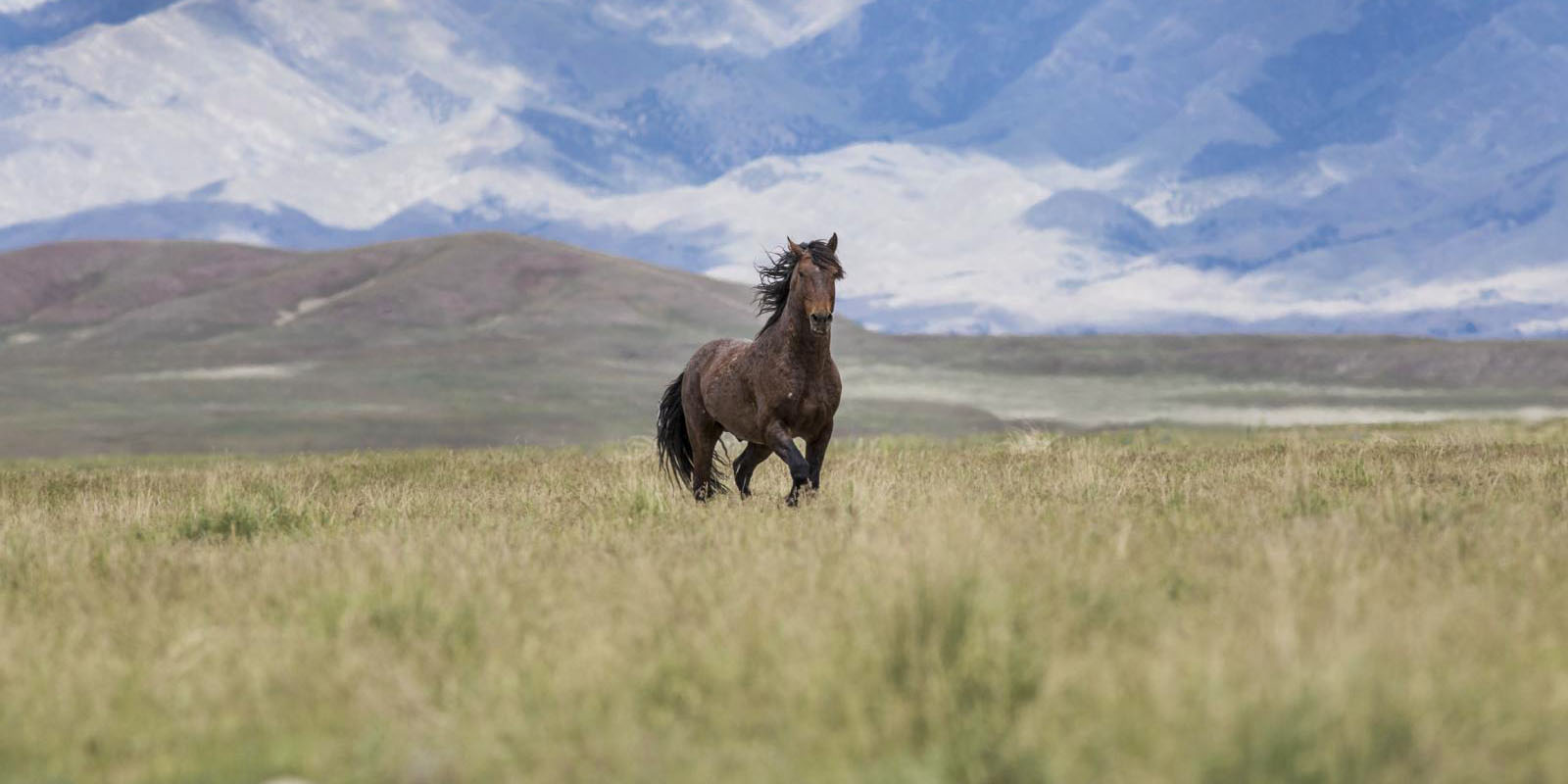We lead the effort to preserve and increase designated habitat to keep wild horses in the wild.
Land acquisition secures key habitat for wild horses.
Conflicts often arise on private lands that are adjacent to or within designated wild horse habitat areas on public
lands.
Additionally, a provision in the Wild Free-Roaming Horses and Burros Act allows private landowners to maintain wild free-roaming horses or burros on their private lands or lands leased from the government if they do so in a manner that protects them from harassment.
When we secure key pieces of habitat adjacent to and within federally designated wild horse habitat areas, we can alleviate private lands conflicts and grow our presence as a key stakeholder in federal decisions about the future of wild
herds in the areas of our land acquisitions.
Grazing lease buyouts make more habitat available.
One of the primary barriers to increasing the numbers of wild horses allowed to roam on public lands in the West is
the allocation of resources within designated wild horse Herd Management Areas.
Although wild horses inhabit just 17% of the BLM land grazed by livestock, approximately 80% of the forage in wild horse habitat is allocated to privately owned livestock. The BLM has established extinction-level population limits for wild horses based on this inequitable resource allocation.
Given the local economic interests and the powerful national lobbies that advocate for livestock grazing, the best way to advocate for larger herds of mustangs is to offer compensation for voluntary grazing reductions, or non-use of grazing permits and permanent retirement of grazing allotments where feasible.


